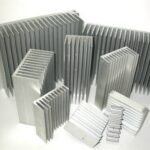What is lubricating emulsion
An emulsion is a two-phase system which consists of two immiscible liquid (such as oil and water), the one being dispersed in other. Out of two liquids, one which is broken into droplet is called as dispersed phase whereas the other liquid-liquid surrounding the internal phase is called dispersion medium or external phase; such a system of two immiscible liquids is very unstable and separates out into a different phase.
So, to increases the stability, the emulsifier is added. The emulsifier molecules like sodium palmitate shown polar character. It consists of hydrophilic and hydrophobic ends which are preferably wetted by water and oil respectively. Thus, emulsifier molecule is absorbed and places itself at the interface of two phases namely oil and water forming an intermediate layer in between two phases.
Conditions where lubricating emulsion are used
These are used in various jobs like milling, threading etc. The tool at the cutting edge experiences very high pressure and temperature. They may result in oxidation and deformation of metal under work. Hence to prevent overheating of metal and tools proper lubricating and cooling is done by lubricating emulsion. Oils are coolant but lubricant whereas water is good coolant but a poor lubricant.
Advantages of emulsion
-
- It increases the life of the machining tools.
- It reduces power requirement.
- It maintains higher machining speed.
- It increases the accuracy of machining of metals and reduces its cost.
The emulsion is further classified as-
Oil – in water: oil is the dispersed phase and water is dispersing medium. it is prepared by mixing oil and water along with 3 % to 20% of water-soluble emulsifiers like water-soluble soaps alkyl sulfate etc. Eg: cutting fluids
Water-in-oil: water is the dispersed by mixing water and oil along with 1% to 10 % of water insoluble emulsifiers like alkaline earth metal soaps etc: cooling liquids.


